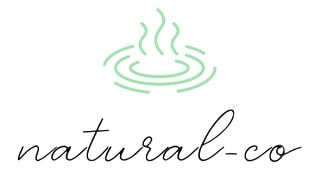Competitor Insights — How to Benchmark and Differentiate in the Hot Spring Market
In a fast-evolving wellness industry, knowing your competitors isn’t about copying them — it’s about understanding where you stand.
The hot spring and spa business is entering a new era shaped by data, sustainability, and customer experience. Whether you operate a resort, plan an investment, or design new wellness programs, competitive intelligence is no longer optional — it’s essential.
1. Why Competitor Insights Matter
Traditional spa operators often rely on intuition or outdated data to understand their market position. But in today’s environment — where eco-design, digital wellness, and senior health tourism redefine expectations — data-driven benchmarking helps identify opportunities that instinct alone can’t.
The goal isn’t to imitate competitors. It’s to learn how to differentiate with purpose.
2. The Three Levels of Hot Spring Competition
| Level | Type | Key Question |
|---|---|---|
| Direct | Other hot spring resorts in your region | What makes guests choose them over you? |
| Indirect | Alternative wellness retreats (spa, thermal hotels, eco-lodges) | What experiences compete with yours? |
| Aspirational | International flagship destinations | What can you learn from leaders setting global trends? |
Understanding competition across these levels helps hot spring operators shift from reactive to strategic decisions.
3. What to Measure When Benchmarking
Successful competitive analysis goes beyond pricing and amenities. It examines how experiences are perceived.
| Category | Metrics to Track | Example Insight |
|---|---|---|
| Customer Experience | Ratings, reviews, sentiment | “Guests value natural scenery more than room luxury.” |
| Pricing Strategy | Average rate, package mix | “Competitors bundle therapy + lodging for long-stay guests.” |
| Brand Positioning | Website tone, visuals, keywords | “Rivals emphasize ‘wellness + sustainability,’ not just ‘relaxation.’” |
| Innovation | Digital booking, AI personalization | “Few players use AI tools to tailor guest experiences.” |
| Sustainability | Certifications, local sourcing | “Eco-luxury positioning creates stronger repeat loyalty.” |
4. Regional Comparison Snapshot
| Region | Notable Strength | Common Gap | Trend Opportunity |
|---|---|---|---|
| Japan & Taiwan | Heritage and culture-rich onsen traditions | Digital engagement | Online storytelling & AI translation |
| Europe (Austria, Hungary) | Medical spa credibility | Branding consistency | Modernized brand visuals |
| Southeast Asia | Affordability, scenic diversity | Senior comfort design | Health-focused long-stay programs |
| North America | Wellness lifestyle marketing | Authentic cultural connection | “Nature + local healing” narratives |
These insights show that cultural identity + innovation is the winning combination. Global leaders aren’t necessarily the oldest — they’re the ones evolving fastest.
5. Using Natural-Co’s Competitor Insights Tool
The Competitor Insights Tool helps wellness investors and resort operators:
-
Compare regional performance benchmarks instantly
-
Identify price gaps, review trends, and amenity differentiation
-
Visualize how customer sentiment varies across markets
-
Spot white space — areas where no one is addressing emerging needs
For example, you can analyze how a Japanese onsen brand positions itself compared to a Thai wellness resort, and see which audience segment each appeals to most.
In a few clicks, you move from anecdote to advantage.
6. How to Differentiate in a Crowded Market
-
Tell a Story Beyond Relaxation
Connect your brand to culture, healing, and sustainability. -
Design for a Specific Traveler Segment
Seniors, wellness nomads, or local eco-visitors — clarity beats generality. -
Integrate Technology Thoughtfully
Use AI tools for feedback analysis, booking optimization, or personalized recommendations. -
Collaborate, Don’t Compete Blindly
Partner with regional tourism boards or other wellness brands to amplify visibility. -
Embrace Measurable Sustainability
Transparency builds trust — and differentiates you from resorts that treat “eco” as a buzzword.
7. Case Example: Japan vs. Thailand
-
Japan: Long-standing heritage drives brand loyalty, but many onsen resorts still lack digital reach.
-
Thailand: Modern resorts attract younger wellness travelers through design and social media presence, yet struggle to gain long-stay retirees.
Each can learn from the other — Japan can modernize; Thailand can deepen meaning. That’s the essence of competitor insight: translating others’ strengths into your own strategy.
8. From Insight to Innovation
Analyzing competitors isn’t just about gathering data — it’s about designing your own path. When you understand how others position themselves, you can build something that feels both familiar and new.
In the next step of this series — Business Model Design — we’ll turn these insights into concrete structures that help hot spring businesses grow sustainably and profitably.

